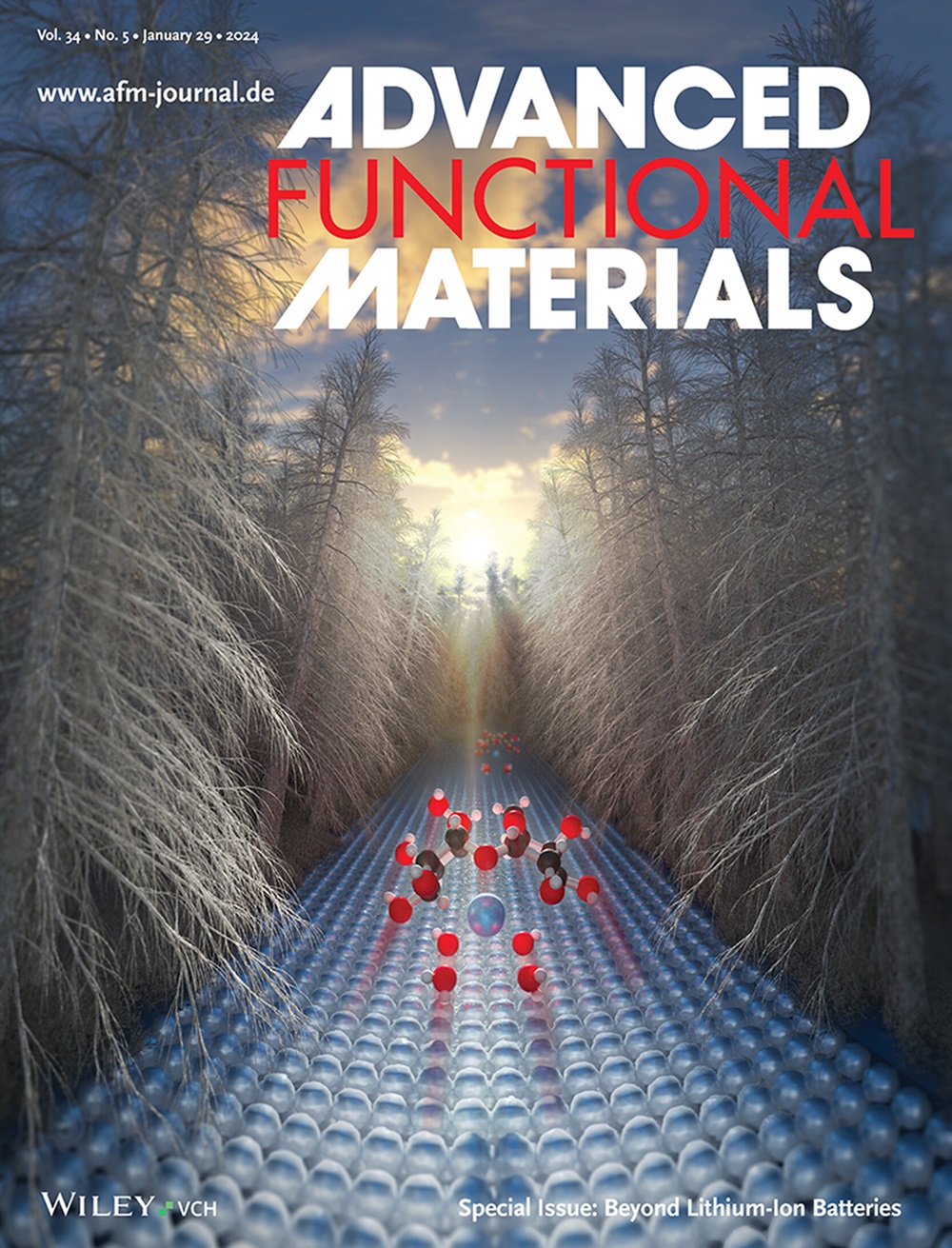Coupling of Mechanical, Self-Healing, Adhesion, and High-Ion Conducting Properties in Anti-Freezing Hydrogel Electrolytes of Zinc Ion Batteries via Fe3+-Carboxylate Coordination
IF 18.5
1区 材料科学
Q1 CHEMISTRY, MULTIDISCIPLINARY
引用次数: 0
Abstract
Aqueous zinc-ion batteries (AZIBs) based on hydrogel electrolytes are considered promising flexible power supplies owing to their intrinsic safety, competent volumetric energy density, and eco-friendliness. However, severe mechanical deterioration of the hydrogel electrolytes caused by insufficient inter-component contact, zinc (Zn) dendrites, and freezing prevents their commercialization. Herein, it is found that, by doping a trace of Fe3+ ions to afford Fe3+-carboxylate supramolecular interaction, the practicality of an archetypal cellulose nanofiber-reinforced hydrogel electrolyte is significantly improved in a couple of aspects, including three and eight times increase in tensile strength and toughness without loss of ion conducting ability (up to 32 mS cm−1) and being room-temperature self-healable and strongly adhesive to various battery components. Together with the use of an anti-freezing mixed Zn salt, the resulting hydrogel electrolyte is able to deliver ultrahigh Zn cycling reversibility (averaging 99.4%), the great cyclability of AZIBs (a high specific capacity of 180 mAh g−1 and capacity retention of 81%), and render the batteries operable under severe abuse conditions of 180° folding, exposure to liquid nitrogen, and cutting–rehealing cycles. This work unlocks the enormous potential of Fe3+-carboxylate chemistry in the development of self-healable, anti-freezing, and extreme-environment-adaptable gel electrolytes for flexible energy storage devices.

求助全文
约1分钟内获得全文
求助全文
来源期刊

Advanced Functional Materials
工程技术-材料科学:综合
CiteScore
29.50
自引率
4.20%
发文量
2086
审稿时长
2.1 months
期刊介绍:
Firmly established as a top-tier materials science journal, Advanced Functional Materials reports breakthrough research in all aspects of materials science, including nanotechnology, chemistry, physics, and biology every week.
Advanced Functional Materials is known for its rapid and fair peer review, quality content, and high impact, making it the first choice of the international materials science community.
 求助内容:
求助内容: 应助结果提醒方式:
应助结果提醒方式:


